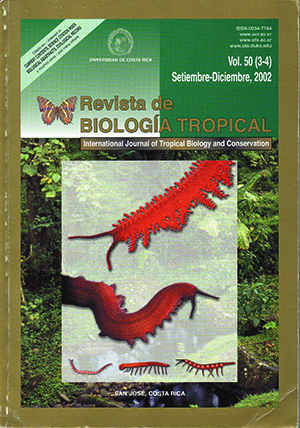Abstract
The symptoms of Anopheles aquasalis larvae naturally infected by a microsporidium, and the ultrastructure of the infecting spores is described. The larvae were maintained under laboratory conditions in salt concentrations of 10 g/l and 20 g/l of water. Daily recordings of the mortality of the larvae were made and the dates of change of instar were noted. Infected larvae were processed for transmission electronic microscopy using conventional methods at pH 7.2 and 260 mOsm/l. The infection by the microsporidia was positively correlated with an increase in the mean duration of the fourth instar of 2.88 to 6.33 days in 10 g/l of salt and of 2.47 to 6.14 days in 20 g/l of salt. Larval mortality also increased by approximately 50% during this instar in both salt concentrations. Development time and survival were not affected during the other immature stages. The mature spores found in the intestines of infected larvae were barrel shaped and measured approximately 2.6 x 2.4 mm. The exospore has a collar shaped prolongation at the posterior end of the spore. The spores are uninuclear with a posterior vacuole. The polar filament is anisofilar with nine rings, five with a diameter of 58 nm each and four with a diameter of 23 nm each. The polarplast is lamellate, and more tightly packed in the apical region. The reduction of the survival of A. aquasalis larvae infected with the microsporidia, and the increase in the development time suggest that this parasite might have a potential as a biological control of this pest. The microsporidium described here has similar characteristics to that of the genus Parathelohania. I suggest that the microsporidium found in A. aquasalis represents a new species and I propose the name Parathelohania aquasalensis. This is the first report of a microsporidium from a dipteran in Venezuela.##plugins.facebook.comentarios##

This work is licensed under a Creative Commons Attribution 4.0 International License.
Copyright (c) 2002 Revista de Biología Tropical
Downloads
Download data is not yet available.


